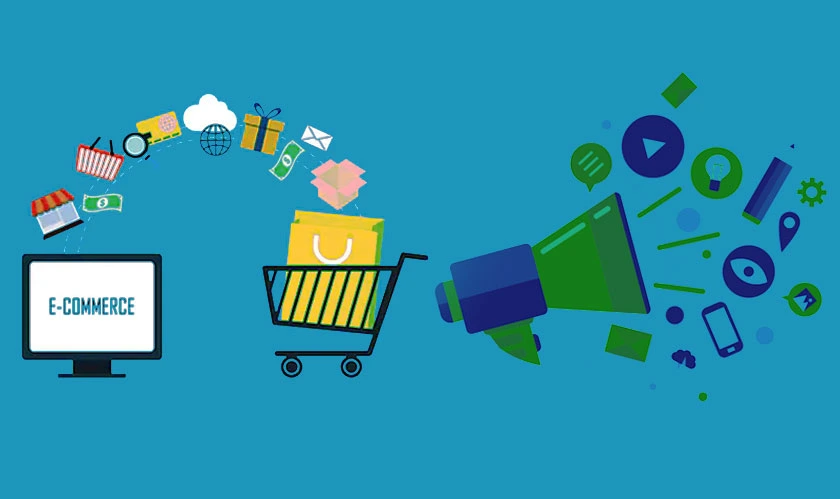Home Platforms Others How to Create a Strong E-Comme...
Others

CIO Bulletin
12 October, 2023
It's critical to keep up with the most recent E-commerce marketing trends and strategies for your E-commerce market place, regardless of whether your E-commerce market place is just getting off the ground or is at the stage where it is sustaining a sizable customer base. For your brand, building and launching an E-commerce website is a major accomplishment. Therefore, it's imperative to spend money on a website structure and an E-commerce digital marketing strategy that work. In addition to all the structure, SSL encryption helps you protect your traffic and fosters client trust.
E-commerce marketing is the practice of using advertising strategies to attract customers to your E-commerce market place, turn those customers into paying customers, and keeping those customers after they have made a purchase.
A comprehensive E-commerce digital marketing strategy includes both online and offline marketing techniques. You can raise brand awareness, encourage client loyalty, and eventually boost E-commerce market share with the aid of a solid E-commerce digital marketing strategy.
You can use E-commerce marketing to promote your E-commerce market place as a whole or to drive more sales for specific products. Below is an overview of a few practical ideas to try.
There's a good chance you'll fit into at least one of these four broad categories if you're beginning an E-commerce market place. Each has advantages and disadvantages, and many businesses operate in multiples at once.
You can think creatively about your opportunities and threats by knowing where your E-commerce market share belongs.
Direct sales to consumers are the focus of B2C E-commerce marketing services. Every purchase you make as a customer at an online store, from clothing and home goods to entertainment, is a B2C transaction.
A business offers its goods or services to another business in a B2B E-commerce marketing services model. Although the buyer frequently resells to the consumer, the buyer is occasionally the end user. On average, B2B transactions have a longer sales cycle but higher order values and more frequent purchases.
Business-to-Business-to-Consumer is referred to as B2B2C. It is an E-commerce digital marketing strategy in which a corporation partners with another organization to offer its goods or services to final consumers.
Business-to-government (B2G) is the E-commerce marketing services in which companies market and sell goods to public administrations at all levels of government, including local, county, state, and federal ones.
C2B E-commerce market places enable people to offer products and services to businesses. Customers could publish the job they need done and request quotes from firms on a website using this E-commerce approach. Services for affiliate marketing would also be categorized as C2B.
Without the aid of online retailers or other wholesalers, a direct-to-consumer E-commerce market place sells its own product to its final customers.
C2C E-commerce market places, also known as online marketplaces, connect customers to trade goods and services. These companies typically make money by charging transaction or listing fees.

Documenting your E-commerce marketing plan will serve as a guide when implementing the strategy, so do so before developing an E-commerce marketing strategy.
Step 1: Establish your store's objectives and goals
Setting goals for your new E-commerce marketing platform is a good place to start if you are just getting started. Check out the conversion benchmarks for your niche or sector, and adjust your goals and objectives accordingly. Setting ambitious objectives without taking into account what is currently successful in the sector may leave you disappointed when you evaluate the results.
Step 2: Evaluate your intended audience and rivals
Do you understand your ideal clients? If so, what are their traits, passions, means of consumption, and other demographic, regional, and psychographic details?
Assemble all of this data to develop several buyer personas. Choosing a conversion funnel that works for you will be aided by your knowledge of your ideal consumers.
Step 3: Select the methods and techniques for marketing
What steps can you take to help you achieve your marketing objectives and goals? Knowing this can help you choose the marketing channels, as well as the associated plans and methods for you E-commerce marketing platform to ensure that you reach your sales objectives.
Step 4: Create your Martech stack
A group of programs created specifically for your marketing initiatives is known as a martech stack. Finding the tools and programs that make it simple to automate and manage marketing operations on many channels can help you establish a martech stack for your store.

In this section, we'll look at nine E-commerce marketing tactics that can support your objectives.
You need to have a strong SEO strategy if you want to rank organically on the search engine result pages (SERP).
The traditional definition of content marketing for E-commerce marketing platforms has been expanded to include pages for products, categories, and shopping carts. Copywriting is a crucial part of e-commerce marketing because it helps to increase conversion rates.
If you use email marketing strategically, you can drastically increase your conversion rates. Email is still important for a E-commerce marketing platform, despite the occasional emergence of publications proclaiming it to be dead.
One sector that gains a great deal from social media is E-commerce. The user's intent while perusing social media is one factor, and product ads aren't always seen as an annoyance.
When your organic reach has peaked, your E-commerce market place’s revenue depends on how much you spend on advertising. That is why practically every prosperous online retailer makes significant investments in sponsored advertisements that cater to each stage of the purchasing process (such as search ads, social media ads, native ads, etc.).
In influencer marketing, you team up with famous people or online users that have large fan bases to represent your E-commerce marketing platform. Since the intention is to avoid coming across as overly aggressive about your items, you provide them with the content guidelines. You assess their performance once they post the content to their social media pages.
Perhaps the most crucial statistic for any E-commerce site is the conversion rate. The conversion rate is the number of visits per 100 visitors.
Online retailers can have logistical problems that enrage clients who are worried about their orders. E-commerce businesses need to set up a quick customer support department in order to handle this properly.
You can keep tabs on all of these factors if you have analytics tools in place. Tools for quantitative analytics track numerical information, including visits, conversions, page views, bounce rates, etc.
It takes time to develop a solid E-commerce marketing plan, and you might not get it right the first time. Selecting one method and testing it to see how well it works for you is the best way to get started. If that tactic doesn't work, you can try the next one on the list until you find one that works for your company.







